Results
-
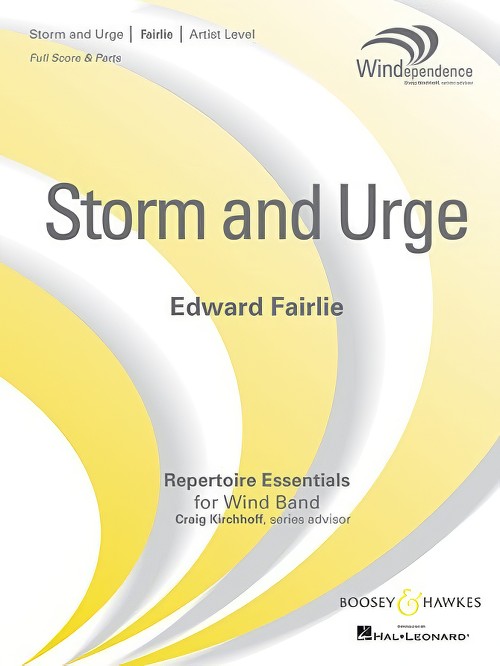 £125.00
£125.00Storm and Urge (Concert Band - Score and Parts) - Fairlie, Edward
Edward Fairlie's Storm and Urge is a significant work for wind band and portrays a journey of emotional turbulence. The title comes from the German Sturm und Drang, a literary and musical movement of the late 1700s which focused on extremes of emotion. Opening with a simple and reflective theme, we are then taken through a range of emotional settings from uncertainty to resistance, and then calm resolve and self-knowledge. With a variety of textures and vivid imagery, this is a masterful work for the contemporary ensemble.Duration: 9:00
Estimated dispatch 7-14 working days
-
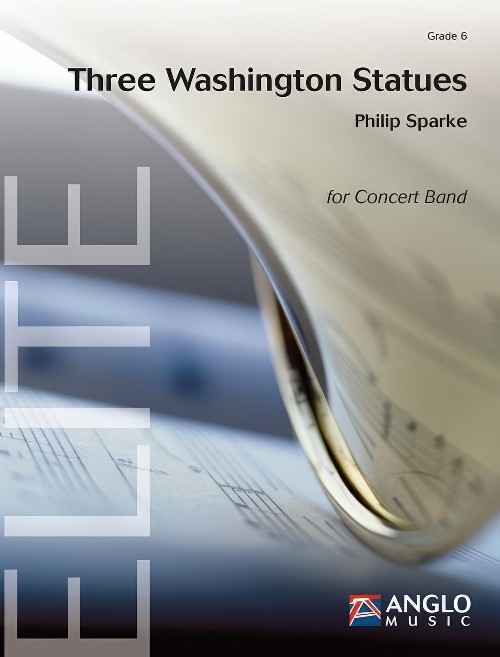 £164.99
£164.99Three Washington Statues (Concert Band - Score and Parts) - Sparke, Philip
Three Washington Statues was commissioned by the United States Army Band "Pershing's Own", led by Colonel Thomas H. Palmatier. Washington D.C. contains some of the world's most iconic monuments, memorials and statues. Philip Sparke has chosen three of these as the inspiration for this piece: 'The Lincoln Memorial' in the form of a Greek Doric temple in which the composer depicts the grandeur of this monument; 'The Martin Luther King, Jr. Memorial' on which steps the iconic speech 'I have a dream' was given - the music is both reverential as well as powerful referring to Martin Luther Kings' speech; and the 'Encore' statue in memory of the world famous African-American composer, pianist and bandleader Duke Ellington. In this final movement, Philip Sparke catches the virtuosic, energetic and unique dynamism of Ellington's' music. Three Washington Statues was commissioned by the United States Army Band "Pershing's Own", led by Colonel Thomas H. Palmatier. Washington D.C. contains some of the world's most iconic monuments, memorials and statues. Philip Sparke has chosen three of these as the inspiration for this piece: 'The Lincoln Memorial' in the form of a Greek Doric temple in which the composer depicts the grandeur of this monument; 'The Martin Luther King, Jr. Memorial' on which steps the iconic speech 'I have a dream' was given - the music is both reverential as well as powerful referring to Martin Luther Kings' speech; and the 'Encore' statue in memory of the world famous African-American composer, pianist and bandleader Duke Ellington. In this final movement, Philip Sparke catches the virtuosic, energetic and unique dynamism of Ellington's' music.Duration: 8:45
Estimated dispatch 7-14 working days
-
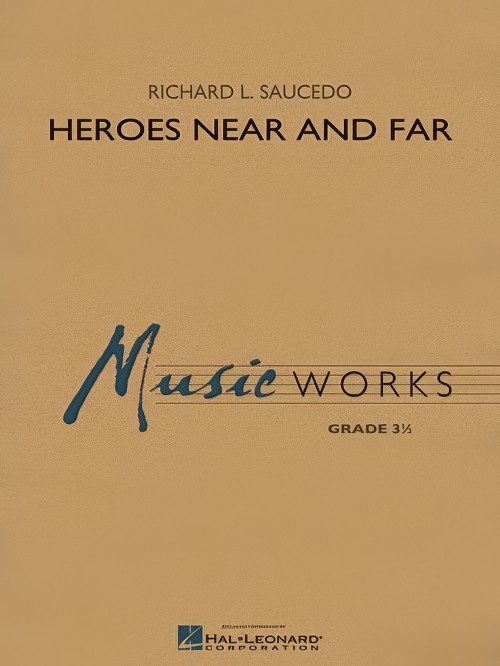 £89.99
£89.99Heroes Near and Far (Concert Band - Score and Parts) - Saucedo, Richard L.
Each of the five movements of this innovative work is designed to invoke a particular type of emotion associated with leadership. Courage is stately in nature and written in a marcato style. Vision is playful in character and focuses on mixed meters as well as mixed emotions. The lyrical and sensitive Compassion is meant to stir the soul, while the contrasting Selflessness offers some of the most intense and demanding music of the set. The energetic final movement Heroes will bring to mind your own favourite superhero! Educator and speaker Scott Lang helped develop the concept for this unique work, and has made available supplemental curricula centred around leadership and character development. This material is tied to the Common Core Standards relating to reading, writing, music, art, and critical thinking. Each movement and its accompanying curriculum can stand on its own, allowing the director the flexibility of using as much or as little as desired. A tremendous resource for today's teacher!Duration: 9:30
Estimated dispatch 7-14 working days
-
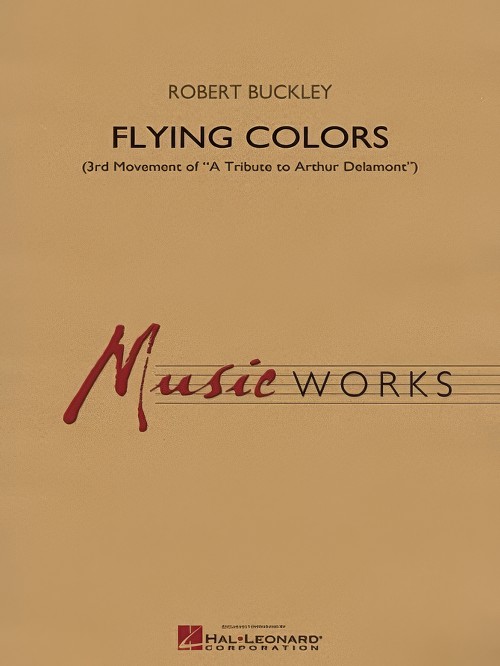 £72.99
£72.99Flying Colors (Concert Band - Score and Parts) - Buckley, Robert
Third Movement of A Tribute to Arthur Delamont.Imagine a band far off in the distance marching toward you - soft at first, the music becomes louder and louder; the red capes of the band sway in the wind, getting closer and closer. It was this image that inspired Flying Colors. Famed bandmaster Arthur Delamont always programmed a march in his concerts, and the hallmark of his band was their red capes. The work begins very softly with a distant snare drum beat. The trumpets enter quietly with the melody, and with each new melodic entry the music grows and intensifies to a roaring finish. This is a fresh new take on a march, and is sure to please players and audiences alike! Flying Colors is the third movement of A Tribute to Arthur Delamont and was commissioned by the West Vancouver Youth Band.Duration: 3:10
Estimated dispatch 7-14 working days
-
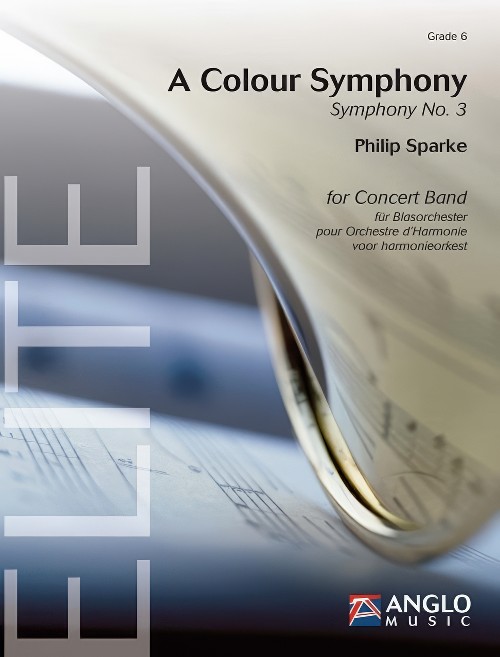 £520.99
£520.99A Colour Symphony (Concert Band - Score and Parts) - Sparke, Philip
Philip Sparke's third symphony, A Colour Symphony, was commissioned by "sinfonischen blasorchester wehdel" conducted by Thomas Ratzek. In the four movements (white, yellow, blue and red) the composer creates links between the instrumentation and harmonic elements and the actual colour of the spectrum the movement stands for. In order to create the greatest richness possible, Philip Sparke used a very large instrumentation including low woodwinds, harp, piano and celli. A Colour Symphony is an impressive and iconic addition to the standard repertoire for large symphonic bands. Philip Sparke's third symphony, A Colour Symphony, was commissioned by "sinfonischen blasorchester wehdel" conducted by Thomas Ratzek. In the five movements (white, yellow, blue, red and green) the composer creates links between the instrumentation and harmonic elements and the actual colour of the spectrum the movement stands for. In order to create the greatest richness possible, Philip Sparke used a very large instrumentation including low woodwinds, harp, piano and celli. A Colour Symphony is an impressive and iconic addition to the standard repertoire for large symphonic bands.Duration: 26:00
Estimated dispatch 7-14 working days
-
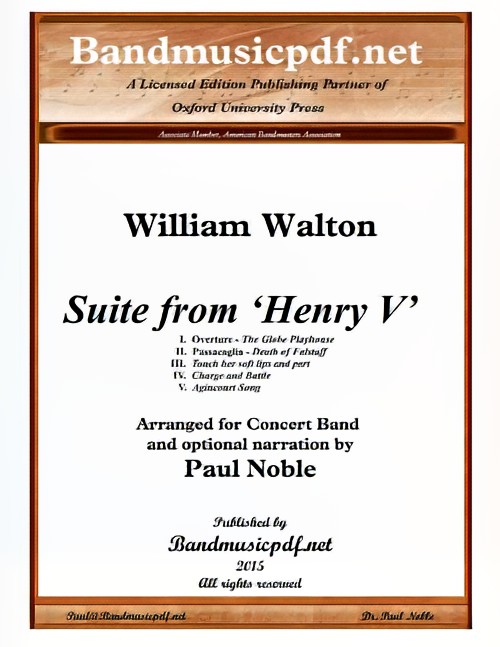 £450.00
£450.00Henry V, Suite from (Concert Band with Optional Narrator - Score and Parts) - Walton, William - Noble, Paul
The Suite from Henry V is an arrangement for Concert Band and optional narrator, adapted from the 1963 orchestral arrangement of William Walton's musical score from the 1944 film Henry V. The suite, originally arranged for orchestra by Muir Mathieson, is in five movements, and occupies a very significant role in the history of music and of Shakespearean studies. Performances exist in a variety of formats because the adaptation of the narration to a film suite is subject to choice. To be chronologically correct, the order of movements from the original suite has been altered to adhere to the narration of the play. And the choice of speeches has required considerable research by classicists who are familiar with the writings of Shakespeare. It has been the endeavour of this arranger to research and present this suite in as authentic a manner as possible, understanding that it might well become the standard by which Concert Bands of the future will adapt and present this music. The arranger is indebted to Anna Warren, a resident of Twickenham and a graduate in Modern Languages (French and Italian) and History from the University of Bristol and a postgraduate from The Institute of Education, the University of London, for her knowledge and insight into the formation of the narration.
Estimated dispatch 7-14 working days
-
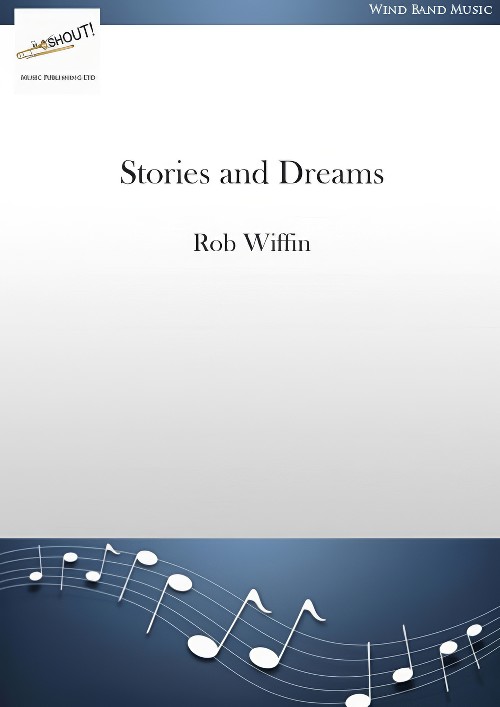 £99.95
£99.95Stories and Dreams (Concert Band - Score and Parts) - Wiffin, Rob
Energetic, wide-ranging and stimulating in its musical ideas, Stories and Dreams is a work of considerable musical interest to both listener and performer. Comprising three movements: The March of the Smiling Soldier (3.30), Stories I could tell (4.15) and Hope (3.30), this suite is only moderate in technical difficulty but is full of musical interest. The first movement is a slightly tongue-in-cheek march, the second is lyrical and poignant taking its atmosphere from the enigma implicit in its title, and the finale vivacious and life-affirming.Duration: 11.15
Estimated dispatch 7-14 working days
-
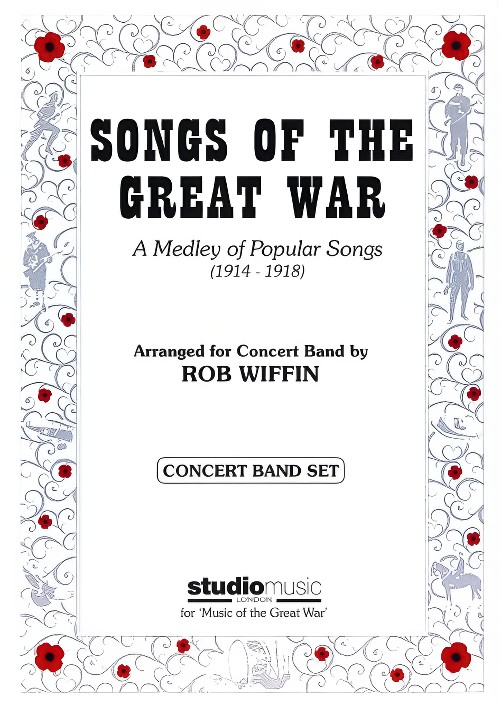 £74.95
£74.95Songs of the Great War (Concert Band - Score and Parts) - Wiffin, Rob
A Medley of Popular Songs, 1914-1918Music of the Great War is a five year project to use music of the period to educate and engage schools, colleges, town bands, and the wider public across the UK and the world to learn in a positive way about the events, the experience of the troops involved from all sides, and how music played its part.To commemorate the centenary of the Great War a specially arranged medley Songs of the Great War has been created. The medley has been arranged for bands to rehearse and was first performed on the 11 November 2015. It brings together some of the most popular tunes played, sung and performed by the men and women of the time - in the trenches and on the various home fronts.The medley includes:It's a Long Way to TipperaryYour King and Country Want YouGood Bye-eeOh! It's a Lovely WarHello! Hello! Who's Your Lady FriendTake Me Back to Dear Old BlightyMademoiselle from ArmentieresThere's a Long, Long Trail A-windingIf You Were the Only Girl in the WorldPack Up Your Troubles (In Your Old Kit Bag)Old Soldiers Never Die/Last Post
Estimated dispatch 7-14 working days
-
 £225.00
£225.00Five Variants of Dives and Lazarus (Concert Band - Score and Parts) - Williams, Vaughan - Noble, Paul
Five Variants of Dives and Lazarus is a Concert Band arrangement from the original work for string orchestra and harp by Ralph Vaughan Williams. The composition is based on the folk tune Dives and Lazarus, one of the folk songs quoted in Vaughan Williams' English Folk Song Suite. The ancient theme on which these variations are based goes back to the sixteenth century, and is known by various titles. Dives and Lazarus is a story told by Jesus in the Gospel of Luke. It tells of an unnamed rich man and a poor beggar named Lazarus. In the Latin Bible, the unnamed rich man is referred to as Dives from dives, the Latin word for rich. This work, based on the tune that Vaughan Williams had loved all his life, which came from the very soil of England, ageless and anonymous, was played at the composer's funeral service in Westminster Abbey on 19th September 1958.
Estimated dispatch 7-14 working days
-
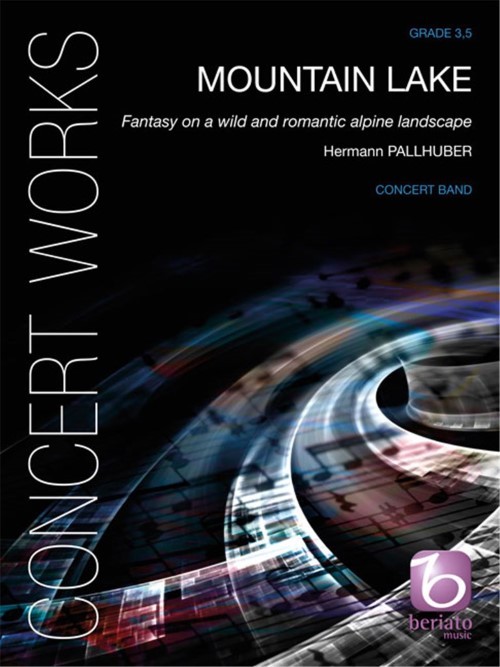 £134.99
£134.99Mountain Lake (Concert Band - Score and Parts) - Pallhuber, Hermann
Fantasy on a Wild and Romantic Alpine LandscapeWho among us hasn't experienced the great power that lies in the tranquillity and beauty of the mountains: wide meadows, rugged cliffs, wild, romantic gorges, thundering waterfalls and idyllic mountain lakes? Mountain Lake emphasizes particular aspects of this landscape: the calm, the majesty and depth of the water and all the dreamlike secrets of a mountain lake. Gentle melodies and mysterious sounds lead us to a powerful, peaceful mountain lake that shimmers in splendour the morning light. Its water glitters and sparkles, and you can hear the movement of the waves on the wind. A majestic chorale rises up from the depths of the lake and brings up unexpectedly seductive secrets to bear. The solo passages in saxophone, flute and trumpet are like water creatures dancing in pulsating rhythms that transport us to an alpine dream world. As if from afar, like a hymn to the beauty of the lake the chorale melody returns again and again with driving energy before it leads us back to the endless peace of the mountains and dissipates into silence.Duration: 8:00
Estimated dispatch 7-14 working days
